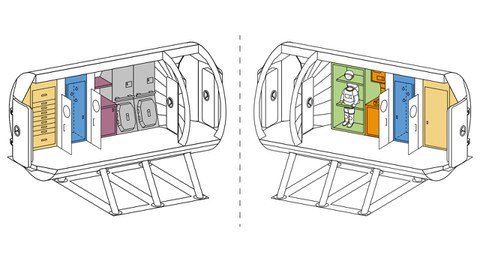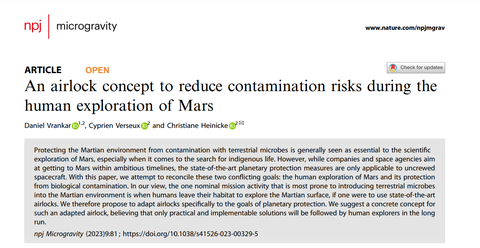Oct 09, 2023
New publication on the design of a decontaminating airlock for Mars in npj microgravity
A new publication at the Chair deals with the question: "How do you keep Mars clean?" This work, which is admittedly somewhat unusual for the Chair, arose in part from Daniel Vrankar's Bachelor's thesis at the Centre for Applied Space Technology and Microgravity (ZARM) in Bremen. Under the supervision of Dr. Christiane Heinicke and in collaboration with Dr. Cyprien Verseux, the article "An airlock concept to reduce contamination risks during the human exploration of Mars" has now been published in the Nature Portfolio Journal microgravity.
In the paper, the authors address the risks of contaminating Mars during a future manned Mars mission. As a measure to minimize the risk of contamination, Vrankar et al. (2023) propose a novel design for an airlock on Mars. Contamination primarily refers to the introduction of terrestrial life (bacteria) to Mars, which would make any search for past life on the red planet impossible. In their design, the authors propose a compartmentalization of the airlock and a wide variety of disinfectants that may meet the current requirements given by Planetary Protection rules. The term Planetary Protection refers to measures that are used, on the one hand, to not produce false positives while searching for (past) life on other planets and, on the other hand, to protect terrestrial ecosystems. For example, Mars rovers are sterilized before launch to take as few terrestrial bacteria as possible with them on their journey.
- The entire paper is available here.
The project is led by Dr. Christiane Heinicke at ZARM, who has already spent a total of 13 months participating in simulated Mars missions in remote locations around the world. Dr. Cyprien Verseux is an astrobiologist at ZARM and has also participated in a simulated Mars mission. In winter 2018, he was station manager of a research station in Antarctica.


